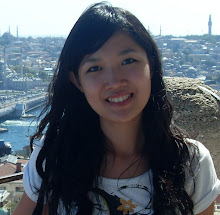Seminar on DSSAT and Climate Change
A workshop on Decision Support System for Agro-technology Transfer (DSSAT 4) and Climate Change was held in FST, UKM from 30 Mac to 10 April 2009. One of my labmates was attending the workshop. After I discovered how interesting this workshop is, I didn't hesitate to attend the seminar which was held on 6 April 09. (Hehe. I know this post is late.)
We know that the climate 10 years from now will be quite different. The climate change can affect the crop production significantly. By predicting how the climate change can influence the yield, researchers and plant breeders can take measures to ensure sufficient food supply. Here's how DSSAT can play a role.
So what is DSSAT? It's nothing new. DSSAT 4 is a software package that integrates the effect of soil, crop phenotype, weather and management options to help users in crop management strategies. It's only suitable for annual crop . There are lots of information of major crops in the existing databases. In simple words, we can put all the data about soil, weather and crop measurement or yield into DSSAT to predict the yield next year.
During the seminar, the speaker showed an example how climate change affect the yield of two Thai rice varieties. Rice production in most places in Thailand are predicted to decrease due to draught. By predicting the area which will be badly affected, the scientists and the government can take appropriate measures such as improved draught resistant varieties.
That was actually the second part of the talk. The first speaker is Dr. Wilkens from IFDC. This organization aids to transfer technology to developing countries. Part of his work is to help The International Nitrogen Initiative to come up with ways to reduce negative nitrogen effect in developing countries.
Nitrogen deposition is a serious environmental problem particularly in Asia. Agricultural activities is the main contributor. Rice has been given a lot of attention because it's the staple food in Asia. Unlike any other crop, paddy required certain depth of water to grow. Thus, most farmers would throw the fertilizers onto the water-filled paddy field. This practice resulted in large nitrogen leakage when the flood water runs off to river or drain. It cause a waste because the plants are not able to absorb these nutrients.
And the solutions? A new fertilizing technology known as Urea deep placement. This method has been demostrated in Bangladesh. This controlled release method encapsulate the fertilizer with ultra thin polymer to prodoce briquette. 4 briqueetes will be placed around each plant at a depth of 7-10 cm to allow efficient release of nutrients. The advantage is fertilization is only done once and less 50% fertilizer is used. However, the labour cost for deep placement is high. Further studies showed that overall cost has not increased due to higher yield and less spending on fertilizer. Besides that, farmers have to worry less about weeds. Click here for a similar powerpoint presentation.




0 comments:
Post a Comment